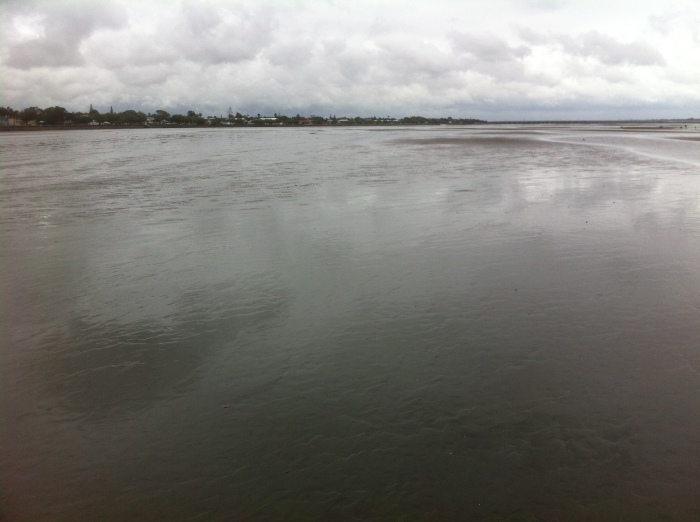Today Wildlife Queensland sent out a team to monitor for seagrass at our Seagrass-Watch sites BB1, BB2 and BB3 (Bramble Bay – Sandgate and Nudgee Beach).
Seagrass-Watch is a global scientific, non-destructive, seagrass assessment and monitoring program operated from James Cook University. Wildlife Queensland advocate and support this project.
Unfortunately, as has been the case since 2003 (the time we started monitoring these sites) and likely since the 1974 Brisbane River flood, no seagrass was found at our sites. It is believed about 1,000 ha of seagrass was lost in Bramble Bay after the floods.
Today however, a small number of individual specimens of Zostera muelleri ssp. capricorni were found distributed across the sand flats in the general area of BB1, BB2 and BB3.
Click here to view the seagrass monitoring site map.
While most plants were dead there were still some excitement about a small percentage of these specimens found alive and healthy.
We suspect that these have washed in and taken root. There were many examples of detached Z. capricorni being washed in today and a single specimen of Halophila spinulosa.
Seagrasses can grow by asexual (or vegetative) reproduction. New ‘plants’ arise without flowering or setting seed. Seagrasses grow vegetatively by extending and branching their rhizomes in the same way that grass in a lawn grows. This allows significant areas of seagrass meadow to form from only a few shoots. (Coles, McKenzie, Campbell, Mellors, Waycott & Goggin, 2004)
This may be something that occurs from time to time and never recorded. So we can’t get too excited just yet.
We will undertake a special monitoring trip to Bramble Bay again in January 2014. Fingers crossed we might find more : )
Rob Coles, Len McKenzie, Stuart Campbell, Jane Mellors (Qld Dept Primary Industries), Michelle Waycott (JCU) and Louise Goggin (CRC Reef) http://www.reef.crc.org.au/publications/brochures/CRC_Reef_seagrass_web.pdf

Terrific news! Let’s hope it survives and doesn’t die like many of the mangrove seedlings that you see for short periods along the coast, but don’t establish.
James